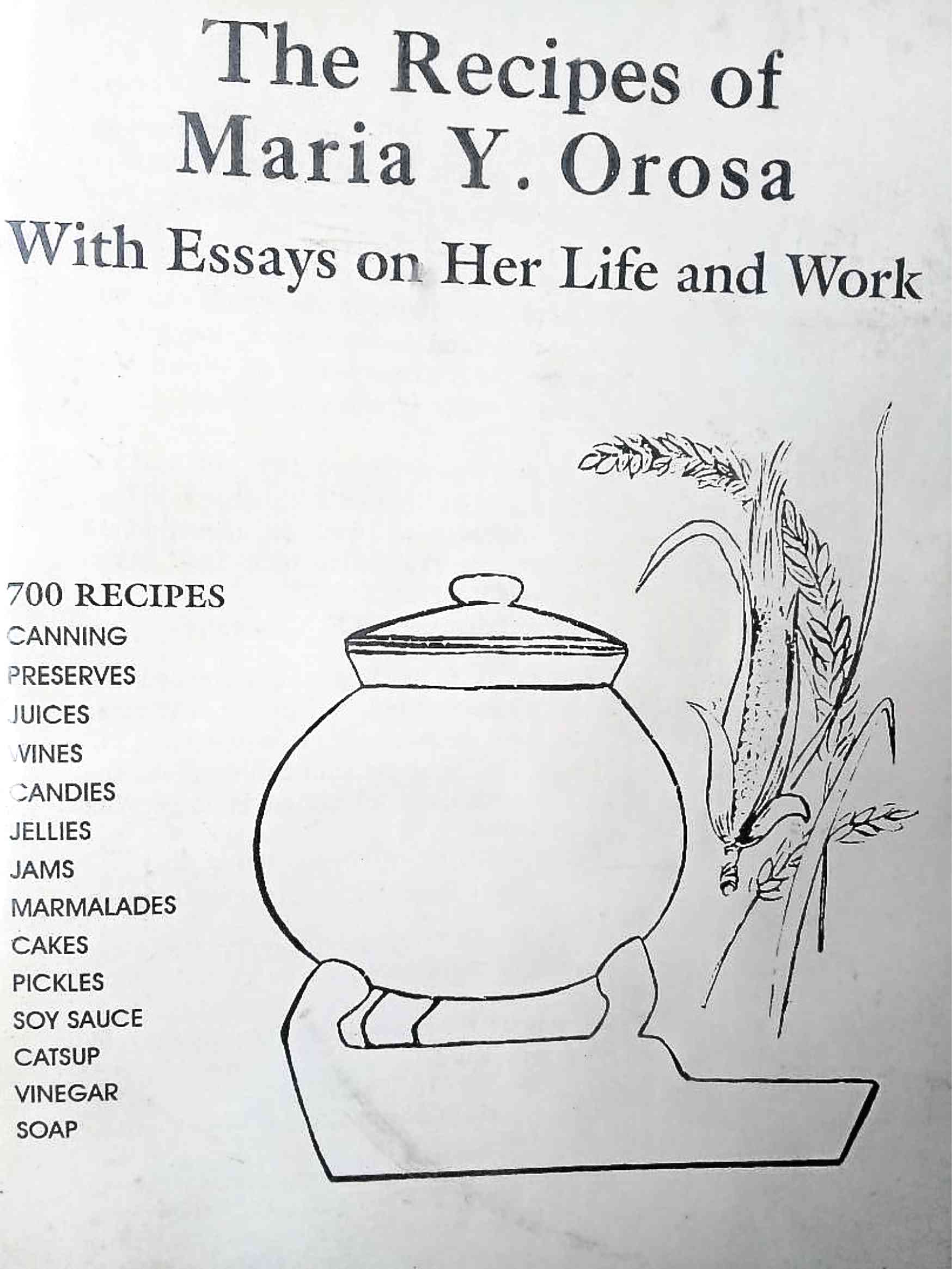
In British diplomat and famous food author Alan Davidson’s 1990 book, “A Kipper with my Tea,” there’s an artist’s rendition of Maria Ylagan Orosa (1893-1945) in her academic cap and toga.
Davidson observes that Philippine bookshops have much of what he calls “the emotional cookery book or recipes as a vehicle for expressing love, fostering comradeship and honoring the dead.”
But he thinks the collected recipes of Orosa are different. They have something of her life as a nutritionist, researcher, clay pot oven invention and even as guerrilla captain in World War II.
Her nieces, Rosalinda Orosa and Helen del Rosario—who called her “Miss Orosa”—gave me a copy of “The Recipes of Maria Y. Orosa: With Essays on Her Life and Work,” written mainly by Helen. Rosalinda, however, wrote a comprehensive account of her aunt’s life, that ended during liberation when Maria was hit twice by shrapnel.
Orosa’s many innovations are still being sold commercially and used today: banana catsup, vinegar made from pineapple, jams and jellies out of local fruits and calamansi juice.
Remembering a pharmaceutical company’s advertising jingle of “tiki-tiki” (rice bran), Orosa comes to mind because she is credited for converting the rice bran into thiamine or Vitamin B1.
She is also recognized for producing the first frozen Philippine mangoes.
Orosa kitchen-tested over 700 recipes. Her nieces said some of them found their way into best-selling cookbooks without attribution.
“The Recipes of Maria Y. Orosa” was written to mark her 25th death anniversary in 1970, but I got hold of the book only in the 1990s.
Batangas tribute
Orosa, therefore, is a much neglected figure in Philippine history and culture.
But last August, the provincial government of Batangas and the Pamanlahi private foundation gave her a tribute as a local hero. She was cited for her work in the resistance against Japanese occupation.
For instance, she smuggled her creation, powdered soybean (now known as Soyalac), to malnourished prisoners in wartime camps.
Before the war, Orosa had established a club called 4H (Health-Heart-Head-Hand) to improve the condition of women in the barrios by teaching them, recounted Rosalinda, “better homemaking, child care, meal planning, food preparation and preservation and poultry raising.” She also invented a clay pot oven that could function like an electric or gas oven.
She stowed away on a boat to the United States in the early 1900s—to study. It must have been easy at the time, because two of my granduncles also stowed away to work in the United States. But Orosa was a woman.
She went on to enroll at Washington University. She earned her stay and matriculation by doing housework for the family of the dean of the College of Pharmacy. Eventually, she earned her bachelor and master’s degrees in pharmaceutical chemistry.
Despite being appointed as Washington state assistant chemist, she opted to return to the Philippines, working on her experiments at the Bureau of Science and Bureau of Plant Industry.
The Batangas event was a run-up to the 125th birth anniversary of such an extraordinary woman, Maria Ylagan Orosa, on Nov. 29.
E-mail [email protected].








































